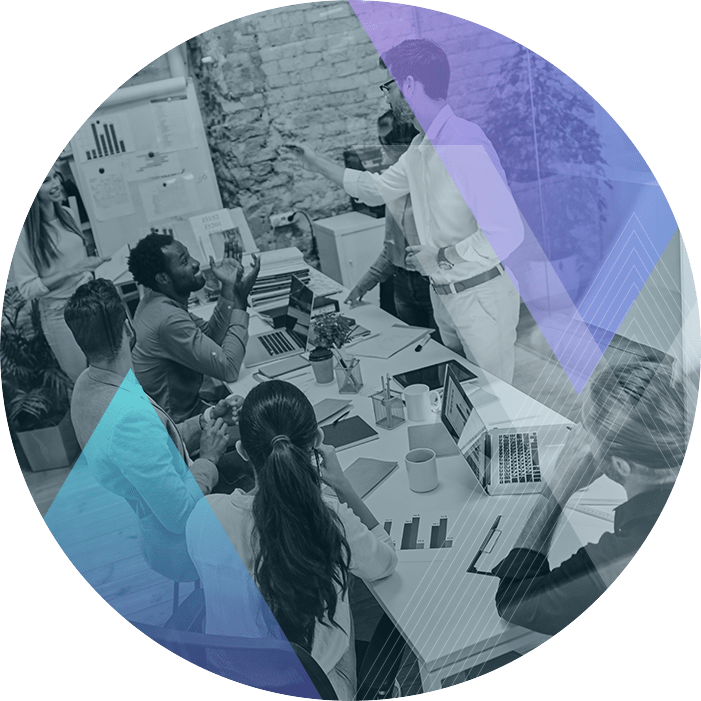Moments that matter – Employee Lifecycle
Effectively managing all employee life cycle stages is crucial as it addresses your organisation’s most valuable assets: people. In fact, employee life cycle management and the overall employee experience is one of the biggest trends in business this year.
This post will take an in-depth look at the employee life cycle model so that you can help your employees reach their full potential. We will explain what it is and share some useful tips to help you through each of the cycle stages.
Recruitment (or Pre-Boarding)
Even before an employee gets hired, the first time they hear about your business or organisation is a moment that matters. High talent people are interested in working in organisations with strong purpose and well-defined values. To ensure this positive moment is experienced by every employee, organisations need strong branding.
The time after accepting a job offer can be a weird phase for the new employee. How organisations communicate with their new recruits during this the time between when they’ve signed the contract and the actual start day is so crucial.
It’s vital for the future employer to stay in touch with recruits, keeping them excited about their new job. Send a welcome package with branded items, shirt, notepad, stickers, and details about the company’s culture and values
Consider a channel of communication where they can get support and access resources even before they’ve been assigned an official email or access rights.
Onboarding
Onboarding is the structure that welcomes your new employees, ensuring they feel at home in their new role and setting the tone for their new work environment. But the importance of onboarding goes beyond a new hire’s first weeks and months.
The first few months in an organisation are when some of the most memorable moments may happen for them. An employee’s first lunch with his or her team can be a key moment, as well as the first check-in with a colleague or manager. — whether a coffee catch up or informal chat virtually or face-to-face. For these moments to become positive experiences, organisations must ensure every new member has time to get acquainted with and adjust to the teams they are joining.
Good onboarding impacts employee engagement and their overall performance. A good onboarding structure can see up to 54% greater productivity with their new employees along with 50% greater retention.
Engagement
Employee engagement is not about a single moment, but a culmination of different experiences that allow employees to truly feel the moments that matter. The “Engagement” stage is where most of an employee’s time in an organisation is spent. And it’s when an employee builds relationships with colleagues.
How an organization handles pain points and negative experiences is pivotal to how an employee moves forward in the organisation. Moments like getting injured while on the job or being involved in a conflict in the office are some of the most memorable to employees in different parts of the world. Or a moment like taking a paternity or maternity leave is a test of a company’s employee experience strategy.
Making sure that these moments are a positive one shows that the organisation cares about the moments that matter to the employee’s personal life, which in turn boosts their morale.
Consider an employee engagement surveys, this method remains a best practice and one of the most effective ways to manage engagement. The most successful strategy is to prioritise engagement throughout every stage of the employee lifecycle.
Development stage
This stage is where employees experience moments that help them develop and build their skills. By consistently encouraging professional development amongst your team, you are helping skill your team members up, and help provide them with a future career path.
- Meet with employees regularly to discuss their goals.
- Encourage professional development in all your teams.
- Assess the knowledge and skills of all your employees.
- Provide regular training opportunities.
- Encourage external learning and reward employees who learn in their own time.
- Get your managers to work with employees directly to help them prioritise the areas that require further development.
- Encourage your team members to be responsible for their own development.
Retention
At the retention stage, employees are integrated into the company and the goal is then to keep them happy, performing, developing, and contributing to the company’s success.
The best way to do this is through a program for rewards and recognition. You also need to make sure you build a nurturing and supportive culture to promote employee satisfaction and engagement.
- Focus on building relationships with your employees.
- Foster a culture of respect and transparency.
- Promote open lines of communication amongst all team members.
- Seek out employee feedback and measure team morale frequently.
- Understand what motivates each of your employees.
This is also the stage when moments like applying for an internal job opening, or transitions to new roles, happen. If the employee’s career progression includes shifting a more flexible work arrangement or schedule, this could also be a moment that matters.
This is when key experiences like coaching or one-on-one sessions with managers can help employees better define their career paths within the organisation.
Offboarding/Separation
The final stage of the employee lifecycle is separation, also known as the offboarding stage. Whatever the reason is for leaving, it’s important to provide a positive experience at this final stage.
An exit interview is then one of the final key moments for an employee. organisations must ensure employees are treated with respect and gratitude during this process. employees must feel they are “heard and appreciated for their contribution” when leaving.
A send-off party, or even a parting meal shared with teammates, is also a moment that matters. Experiencing positive moments in this stage may encourage the departing employees to become your brand’s ambassadors who recommend your company to other talented individuals.
Identifying moments that matter requires listening to employees and managers and being open to their feedback. These moments can help create a workplace that empowers employees and their needs.
Technology can play a crucial role, and there are many applications that can help you through the employee lifecycle. Such as, a digital workplace that helps employees feel connected, and drives engagement in your organisation.
If you would like to discover how these applications can help your business create an environment that puts people first and drives better business results, contact the Huddler team to book a free demo.











